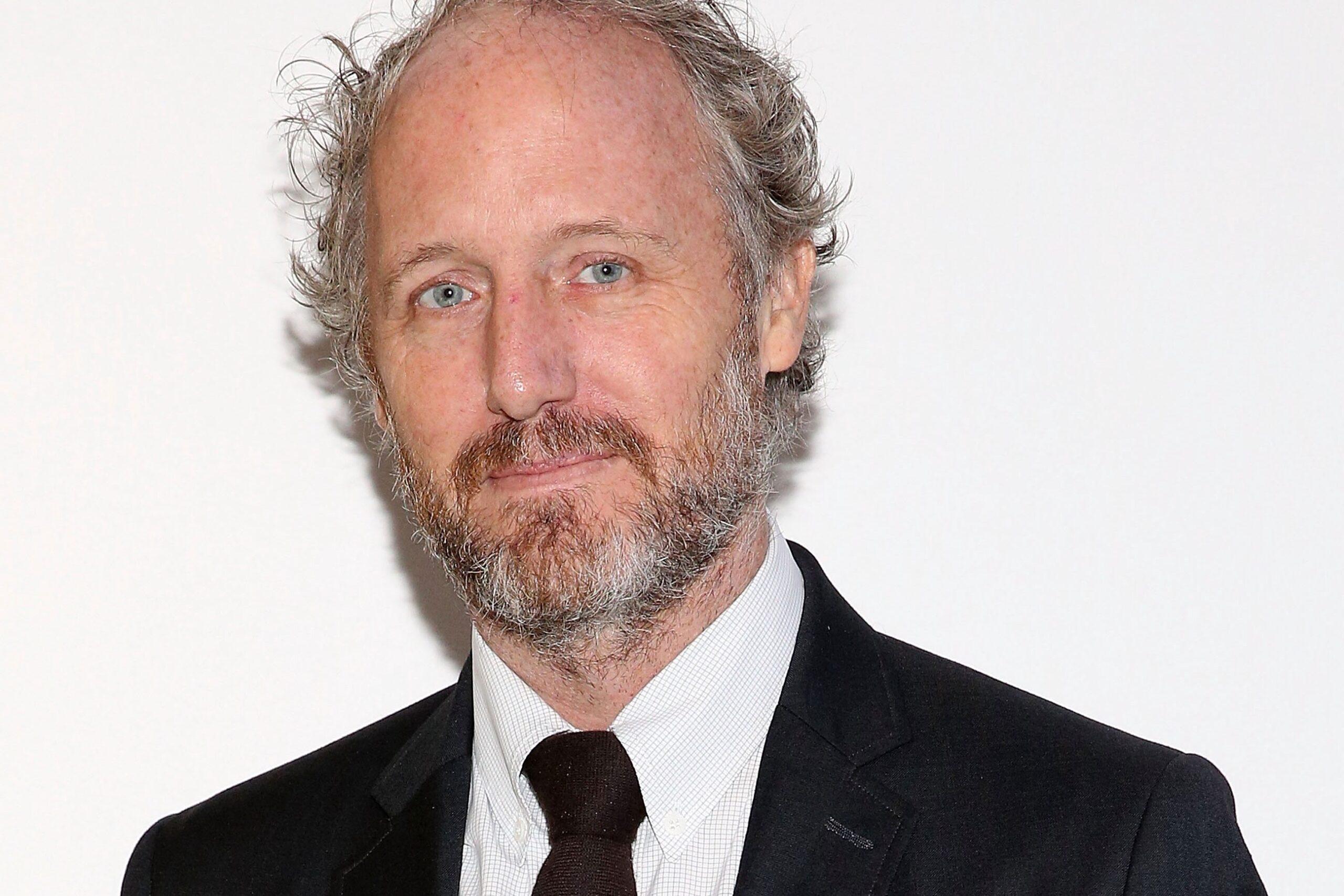
By Eric Ducker
Mike Mills was 4 years old when his family moved south from the Bay Area to Santa Barbara, California. It was 1970 and his father had taken a job as director of the Santa Barbara Museum of Art. His parents bought an old house that needed fixing up, much of which they did themselves. Mills would wake up to the smell of Strypeeze paint remover and the sound of a power sander. There was a creek going through the backyard and he could spend the whole day walking along it. “Santa Barbara back then, it was really idyllic. It was really sleepy, foggy, overgrown, not as moneyed as it is now,” says Mills.
He was 13 when he started to hate it.

“A lot of people I know had a fucked-up family, and it deforms you, but I maybe got deformed in a better way.” — Ed Templeton, Deformer
It was 1979 and Mills was just getting into punk rock, a sound and a scene whose death was prognosticated by its followers during even its earliest moments. Santa Barbara was Fleetwood Mac. It was Peter Frampton and the final years of Led Zeppelin. It was the supposed happiness of a honeyed life. “I just couldn’t relate,” says Mills.
He got beaten up in the halls of Santa Barbara High School for having dyed hair and remembers being chased around the parking lot by jocks trying to hit him with their car. He was even an outcast within the city’s small punk circle. His devotion to bands from New York and England, like Talking Heads or Joy Division, set him apart from the fans of Black Flag and the more macho punk groups coming out of Orange County. He went to the B-52s show when the Athens weirdos came to UC Santa Barbara and out front was a crew of local hardcore kids, taking note of who was inside.
He dreamed of moving to New York City for art school, just like one of his two older sisters had, before she reluctantly returned to Santa Barbara when she was diagnosed with cervical cancer. His parents encouraged him to follow his imagined path, his mother telling him, “Michael, you’ve got to get out of this town. There’s too much leisure here, it makes you kinky.”

“Our good fortune allowed us to feel a sadness that our parents didn’t have time for, and a happiness that I never saw with them.” — Oliver Fields, Beginners
20th Century Women is the third feature film written and directed by Mills, and his first set in his old hometown. It’s an ambitious, tender, and deeply personal work. Set in 1979, it begins on the 55th birthday of Dorothea, a single mother finding it harder and harder to relate to her newly teenage son. In a tremendous performance by Annette Bening, Dorothea spends much of the film trying to make sense of what she is seeing and hearing, squinting at the realities of the modern world. She is a smart and wickedly clever woman who was raised during the Depression. Now she is fascinated as her child gracefully skateboards down the middle of the street and stupefied by why he would play a juvenile game that intentionally renders him unconsciousness.
Mills picked 1979 for the film not only because of its importance to his own history, but because it allowed him to emphasize a generational divide. With the rise of personal computers, the oil crisis, the Iranian Revolution, and the San Diego school shooting by teenager Brenda Spencer, Mills sees 1979 as the end of post-war America and the beginning of the era we are living in now.
The impending rise of former California governor Ronald Reagan would lead to America’s aspirational yuppie culture, one without a real relationship to the middle class. “It was a very recession-riddled time,” says Mills of the late ’70s. “Everyone was always making do, scraping by, not being what they really wanted to be. That relates a lot to now, in the sense that you can’t beat the fucking system. I really remember that, and I feel like that infuses [Billy Crudup’s] William character in my movie, even Dorothea. These people are kind of living outside of the dream, and finding small dreams in the debris of the big dreams.”
The time period of 20th Century Women isn’t just evoked with Alva T-shirts and a Raincoats song in the soundtrack. Mills also makes unexpected formalistic moves, like when Julie (played by Elle Fanning) narrates an excerpt from Judy Blume’s Forever … and young Jamie (Lucas Jade Zumann) does a section from Susan Lydon’s feminist essay “The Politics of Orgasm,” about clitoral stimulation. There is an insert shot of Birkenstocks on a blank white background, and a dreamy 13-second photo montage of Joseph Szabo’s images of teenage boys. Scenes from Godfrey Reggio’s experimental film Koyaanisqatsi are overlaid with President Jimmy Carter’s “Crisis of Confidence” speech. While Mills was writing 20th Century Women, he made a silent five-minute piece for L.A.’s Museum of Contemporary Art, composed of thousands of images he found in magazines published in 1979. Watching it now, it feels like a dizzying inspiration board.
20th Century Women is also the first film Mills has made that is centered on his own mother, Jan, though in a way all of his films are about her. Following her death from cancer in 1999, he decided to adapt Walter Kirn’s novel Thumbsucker, reworking it so it became a movie about a family realizing they don’t deserve the woman that lives among them. During the press tour for Thumbsucker, Mills began writing Beginners, a film inspired by the last stage of his father Paul’s life, after he came out as gay following Jan’s death and then too passed away from cancer, five years later. And while Christopher Plummer’s portrayal earned him an Academy Award for Best Supporting Actor, the movie’s undercurrent is Ewan McGregor’s Oliver Fields character (standing in for Mills) not being able to fully embrace his dad’s new life or maintain a relationship of his own after witnessing his father’s emotional neglect of his mother.
The details that enliven 20th Century Women aren’t just drawn from the histories of Mills and his mom. The character Abbie, a tenant of Dorothea’s played by a brilliant and typically unbound Greta Gerwig, is largely based off one of Mills’s older sisters, all the way down to the names of her pet birds.
While some filmmakers try to shake off implications that their films are inspired by their actual lives, Mills embraces the autobiographical elements that shape his work. “I believe in journalism. I believe in reporting on something and that whole process is exciting to me. It makes me happier than inventing stuff,” he says. “I had to do a lot of inventing to make these last two movies, but I have these all-important touchstones, these all-important pieces of treasure. I’ve got to get from one piece of treasure to the other, or I’ve got to transpose this piece of treasure to make sense of my story, but the heart of it is something I felt and saw.”
Mills’s career is often framed as part of the lineage of filmmakers like Spike Jonze and Michel Gondry — music video and commercial directors from the turn of the century who brought their off-kilter visions to small but influential movies. But Mills is actually a natural documentarian. In the years before Thumbsucker, his projects included Deformer, an evocative short about Huntington Beach pro skater and artist Ed Templeton, and Paperboys, a Jack Spade–funded piece about small-town teenagers in Minnesota. Even his best video, Air’s “All I Need,” is basically an endearing documentary about a young skater couple in Ventura.
Mills sees himself as a conceptual-art-school kid who managed to cobble together a career in film despite never going to film school. He did end up leaving Santa Barbara for New York, graduating from Cooper Union in 1989 and becoming a graphic designer. In the 1990s he did work for X-Girl, the hip women’s clothing label from Daisy von Furth and Sonic Youth’s Kim Gordon. He did illustrations and album covers for bands like Beastie Boys, Cibo Matto, and the Jon Spencer Blues Explosion. He even played bass in the Grand Royal band Butter 08, further confusing people who thought he was the guy from R.E.M.
During this time he also fell in with the graffiti-indebted art scene affiliated with the Lower East Side’s Alleged Gallery. In Beautiful Losers, the documentary about this community, he remembers that when he first went into art school he felt that “being a painter and a straight white male artist, showing in galleries, showing in museums, all that stuff seemed like the most corrupt, the most duplicitous, the least powerful, the least punk, the least interesting thing to do.”
Mills explains in the documentary that because expressing sadness was basically forbidden when was growing up, much of his early work revelled in the feeling, almost to the point of silliness. As he’s gotten older, his work has gotten more honest, and not just about this single emotion. “Having my second parent die and the intenseness of my dad’s last five years, it was a real ride,” he says. “That shit just fucks you up, it makes you brave. I may have not been so revealing had that not happened, if I wasn’t under the influence of grief.”

“This is the really hard part. There’s a hard part and then it gets better. Then it gets hard again, but never mind. I shouldn’t have told you that part, I should have just told you that it gets better and that’s it.” — Dorothea, 20th Century Women
Mills now lives in Los Angeles with his wife, the director/artist/writer Miranda July, and their 4-year-old son Hopper. When I meet him at a West Hollywood hotel, he is unshaven and wearing a rumpled but stylish black suit, a grey scarf around his neck instead of a tie. He looks like he should be playing the organ in Bob Dylan’s touring band.
The night before he had done three post-screening Q&As across the city, part of the obligations for directors who release movies during awards season. Earlier in the week, 20th Century Women got a Golden Globe nomination for Best Motion Picture — Musical or Comedy, and though I laughed a lot while watching, it’s not really either. “I’m honored to be thought of as funny,” Mills says.
Mills is 50 years old now. In a 2014 project for the San Francisco Museum of Modern Art, he asked a group of pre-adolescents from Silicon Valley what the environment will be like in the future. In Paperboys, he asked his teenage subjects if their jobs will still be around when they’re older. When I ask him what his 13-year-old self would have imagined the world would be like in 2016, he answers, “Just the number 2016 would have seemed laughable. It does to me now even. When I write the date sometimes, I’m like, ‘Blah, that’s like a made-up number.’ My son was born in 2012, or the kid in [20th Century Women] was born in 2000. That just, for whatever reason, makes me just sort of want to fall over.”
As 2016 ends, we are entering uncertain times. Mills agrees that we may be somewhere between an ending and a new beginning, but he’s not making any predictions. “I’m interested in how we get the future wrong all the time, every time,” he says. “We never see the important thing that’s coming. That’s also true for our personal life. It’s out of our control, it’s unpredictable. When it’s good or when it’s bad, it’s fleeting either way.”
Eric Ducker is a writer and editor in Los Angeles.

